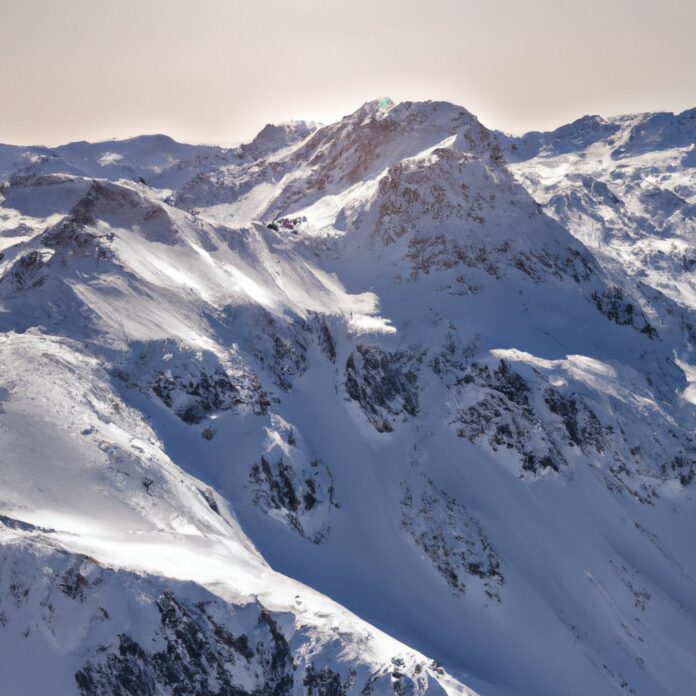Winter outdoor adventures offer a thrilling and exhilarating experience for those who enjoy the beauty of the snowy season. From skiing and snowboarding to snowshoeing and ice climbing, there are endless possibilities for outdoor enthusiasts.
Whether you prefer the adrenaline rush of speeding down the slopes, the peacefulness of exploring winter landscapes, or the excitement of ice climbing, there is something for everyone to enjoy. Activities such as snowmobiling, dog sledding, winter wildlife viewing, and ice fishing provide unique opportunities to connect with nature and experience the wonders of winter.
In this article, we will explore these exciting winter outdoor adventures, including the right equipment, techniques, safety precautions, and tips to make the most of each activity. So bundle up and get ready to embrace the thrills and wonders of winter outdoor adventures.
Skiing and Snowboarding
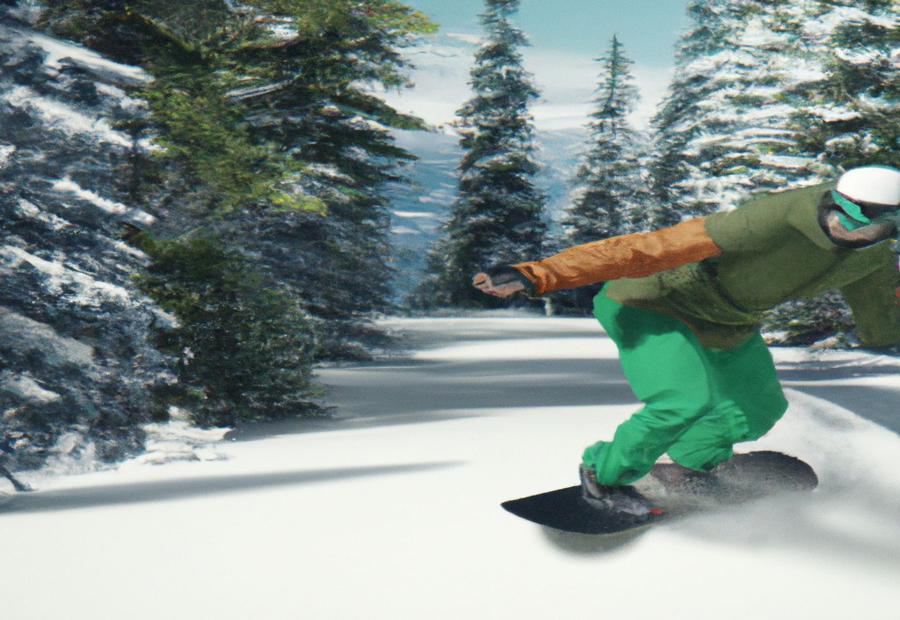
Photo Credits: Paintballbuzz.Com by Adam Martin
Looking to hit the slopes this winter? Get ready to carve up the mountains as we dive into the exhilarating world of skiing and snowboarding.
Discover the secrets to choosing the perfect ski resort, explore the various types of skiing and snowboarding, and learn essential safety precautions for a thrilling yet safe experience.
So strap on your gear and get ready for an adrenaline-fueled adventure on the snow-covered slopes.
Types of Skiing and Snowboarding
| Type | Description |
| Alpine skiing | This is the most common type of skiing, which involves sliding down slopes using skis with fixed-heel bindings. It is suitable for both beginners and advanced skiers. |
| Freestyle skiing | This type of skiing involves performing various tricks, jumps, and stunts on specially designed terrain parks, halfpipes, or natural features like cliffs. It requires advanced skills and is popular among thrill-seekers. |
| Cross-country skiing | In cross-country skiing, participants use skis with free-heel bindings to move across flat or gently undulating terrain. It is a great cardiovascular workout and allows for exploration of vast winter landscapes. |
| Backcountry skiing | This type of skiing takes place in unmarked and unpatrolled areas, away from the groomed trails. It offers an adventurous and challenging experience, often involving uphill ascent before enjoying powder-filled descents. |
| Snowboarding | Snowboarding involves descending slopes on a single board instead of skis. It requires a different set of techniques and balance compared to skiing, making it a popular choice for those seeking a unique winter adventure. |
Safety Precautions for Skiing and Snowboarding
When it comes to skiing and snowboarding, safety precautions for skiing and snowboarding are absolutely crucial. Here are some important measures to consider for your safety:
- Always prioritize your safety by wearing appropriate protective gear, including a helmet, goggles, and padding for your knees and elbows.
- Before hitting the slopes, make sure that your equipment, such as skis or snowboards, is properly maintained and in good condition.
- Stay within your skill level and avoid attempting advanced slopes or tricks if you lack adequate training or experience.
- Be conscious of your surroundings and abide by all posted signs and markers on the slopes.
- Reduce the risk of muscle strain or injury by warming up and stretching before starting your skiing or snowboarding session.
- As physical activity in cold weather can cause dehydration, it’s important to stay hydrated throughout the day by drinking plenty of water.
- Practice proper etiquette on the slopes, such as giving right of way to other skiers or snowboarders and refraining from reckless behavior.
- Always ski or snowboard with a partner or in a group so that there is someone available to assist you in case of an emergency.
- Prioritize your safety by checking the weather conditions and avalanche risk before heading out, and refrain from skiing or snowboarding in unsafe weather conditions.
- If you are skiing or snowboarding off-piste or in backcountry areas, take necessary precautions such as carrying avalanche safety equipment and having knowledge about avalanche risks.
Snowshoeing and Cross-Country Skiing
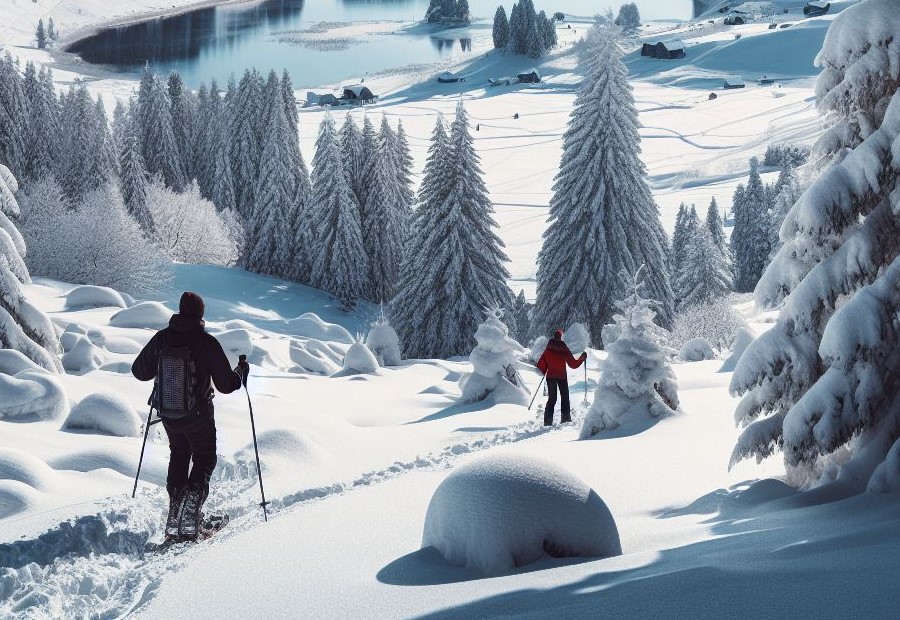
Get ready to hit the snow-covered trails and embrace the winter wonderland with two exhilarating outdoor activities: snowshoeing and cross-country skiing. Lace up your boots and strap on your snowshoes as we explore the beauty of winter landscapes firsthand. And if you’re looking to glide through the snowy scenery, we’ll also guide you on how to get started with cross-country skiing. Get ready for an adventure-packed winter like no other!
Exploring Winter Landscapes on Snowshoes
When exploring winter landscapes on snowshoes, it is important to consider several factors to ensure a safe and enjoyable experience.
- Choose the right snowshoes: Selecting snowshoes that are suitable for your weight and the type of terrain you will be walking on is essential. Different snowshoe models offer varying levels of traction and flotation.
- Dress appropriately: It is important to wear warm and waterproof clothing that allows for layering. Remember to wear insulated boots and thick socks to keep your feet dry and warm.
- Plan your route: Before setting off, it is advisable to research the area you plan to explore and select a route that matches your skill level and interests. Take into account factors such as distance, elevation gain, and potential hazards like steep slopes or avalanche-prone areas.
- Bring necessary equipment: Pack essential items such as a map, compass, headlamp, first aid kit, and extra food and water. If venturing into avalanche terrain, it is crucial to also carry a shovel, avalanche beacon, and probe.
- Follow Leave No Trace principles: Show respect for the winter environment by staying on marked trails, avoiding sensitive areas, and properly disposing of waste. Preserve the landscape as you found it for the enjoyment of others.
- Check weather conditions: Prior to embarking on your adventure, check the weather forecast and be prepared for changing conditions. Dress in layers and bring extra insulation if needed.
- Travel in a group: Exploring winter landscapes on snowshoes is more enjoyable and safer when done with others. Always travel with at least one companion, inform someone of your plans and expected return time, and ensure that everyone has the appropriate skills and gear.
Getting Started with Cross-Country Skiing
To get started with cross-country skiing and truly enjoy the experience, follow these simple steps:
- Getting the right equipment is essential. Choose cross-country skis, boots, and poles that are suitable for your height, weight, and skill level. Make sure they are properly fitted so you can glide smoothly on the snow.
- Dress appropriately for the chilly adventure. Wear moisture-wicking base layers to keep your body dry, insulating mid-layers for warmth, and a windproof and waterproof outer layer to stay protected. Don’t forget to wear a hat, gloves, and sunglasses or goggles for added comfort.
- Find a suitable location to make the most of your cross-country skiing experience. Look for cross-country ski trails or groomed tracks in your area. Many parks and ski resorts offer designated areas for this exhilarating activity.
- Learn the basic techniques to master cross-country skiing. Practice the fundamental techniques such as the diagonal stride and the double-pole technique. Take lessons from a professional instructor or watch instructional videos to learn the correct form and technique.
- Ensure you warm up and stretch properly before hitting the trails. This will help prevent any muscle injuries and prepare your body for an enjoyable skiing session.
- Start at your own pace and gradually progress. Begin with shorter and easier trails to build endurance and confidence. As you improve, challenge yourself by gradually increasing the distance and difficulty level of the trails.
- Stay hydrated and fueled throughout your skiing session. Carry a water bottle and some energizing snacks to maintain your energy levels and make the most out of your time on the snow-covered trails.
- Practice safety and respect others. Always be aware of your surroundings and follow any trail rules or signs. Ski in control and yield to other skiers when necessary, ensuring a safe and enjoyable experience for everyone.
- Finally, take a moment to appreciate the beauty and tranquility of cross-country skiing. It offers a wonderful opportunity to connect with nature and marvel at the winter scenery. Enjoy every moment of this unique outdoor activity.
Ice Climbing
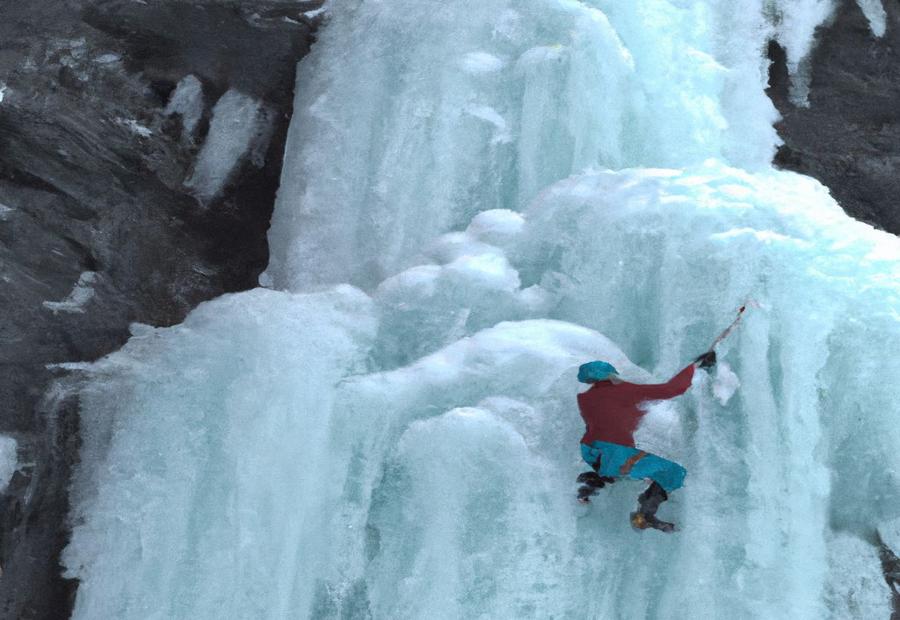
Photo Credits: Paintballbuzz.Com by Donald Miller
Embark on an exhilarating winter adventure with ice climbing, pushing your limits in icy terrain. Discover the essential gear needed for this thrilling sport, equipping yourself for the frozen challenge that awaits.
Learn the techniques and skills required to conquer towering ice walls, becoming a master of this extreme vertical pursuit. Unleash your inner daredevil and explore the world of ice climbing, where adrenaline meets icy peaks and breathtaking views. Get ready for an unforgettable journey into the heart of winter’s icy wonderland.
Essential Gear for Ice Climbing
Ice climbing requires Essential Gear for Ice Climbing to ensure safety and success. Here are the essential pieces of equipment you will need:
- Ice Climbing Boots: Choose boots with good insulation and a rigid sole for stability on slippery ice.
- Crampons: These metal spikes attach to your boots and provide traction on icy surfaces.
- Ice Axes: You’ll need two ice axes for ice climbing, one in each hand, to help you grip the ice and make progress.
- Harness: A climbing harness is essential for safety and allows you to attach yourself to a rope.
- Helmet: Protect your head from falling ice or rocks with a sturdy climbing helmet.
- Rope: Choose a dynamic climbing rope that can withstand the force of a fall.
- Carabiners: These metal clips are used to connect various pieces of equipment together.
- Belay Device: A belay device is used to control the rope while climbing and to catch falls.
- Climbing Gloves: Insulated gloves with good dexterity will protect your hands from the cold and sharp ice.
- Ice Screws: These specialized screws are used to secure the rope to the ice as you climb.
By using the right gear, you can ensure a safe and enjoyable ice climbing experience. Remember to always check your equipment for wear and tear before each climb and never climb alone. Stay safe and have a thrilling ice climbing adventure!
Techniques and Skills for Ice Climbing
Proper use of ice climbing equipment is essential to ensure safety, as it incorporates techniques and skills for ice climbing. This includes wearing a climbing harness, using crampons, ice axes, and ropes.
Developing good technique is crucial for mastering ice climbing. Practice using ice tools to efficiently swing and secure them into the ice, as it incorporates techniques and skills for ice climbing.
Footwork is important in ice climbing and requires techniques and skills for ice climbing. Learning how to kick and balance on crampons will help you maintain stability on the ice.
Understanding ice conditions is vital for ice climbers, as it incorporates techniques and skills for ice climbing. Learning to read the ice and identify weak spots can help prevent accidents and ensure a successful climb.
Communication skills are important when climbing in a group. Clear and effective communication is necessary to coordinate movements and ensure everyone’s safety, incorporating techniques and skills for ice climbing.
Building strength and endurance is key to becoming a skilled ice climber. Regular training and exercise, such as strength training and cardiovascular workouts, can enhance your climbing capabilities by improving techniques and skills for ice climbing.
Learning rescue techniques is essential for ice climbers, as it incorporates techniques and skills for ice climbing. Knowing how to respond to emergencies and being prepared to help others can be life-saving in critical situations.
Snowmobiling
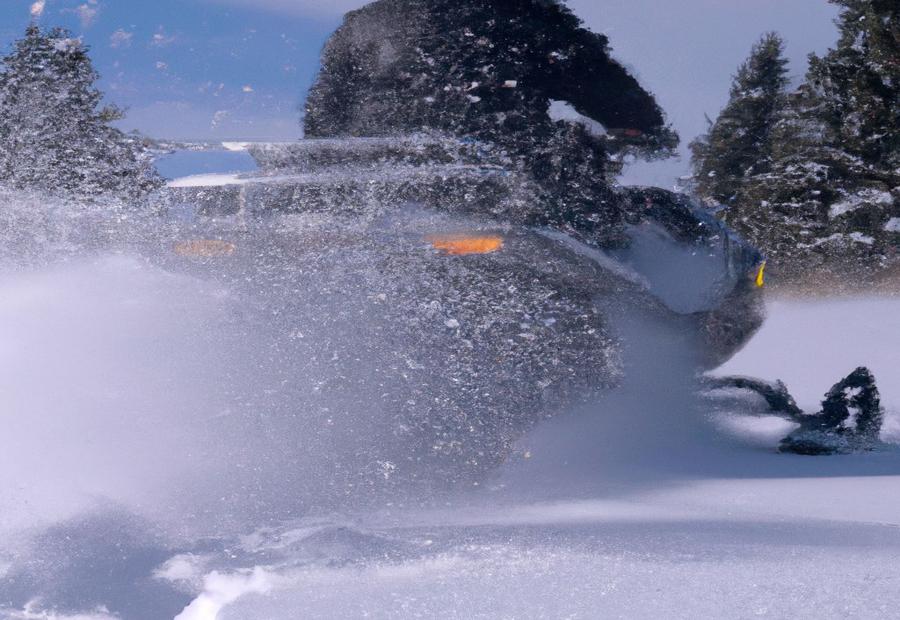
Photo Credits: Paintballbuzz.Com by Edward Adams
Snowmobiling, the exhilarating winter outdoor adventure that promises thrills and excitement.
In this section, we’ll dive into getting started with snowmobiling and share essential safety tips to ensure a memorable and secure experience.
Discover the adrenaline-fueled joy of cruising through breathtaking snowy landscapes as we unleash the secrets of this popular winter activity. So, gear up, brace yourself, and prepare for an action-packed ride on the snow!
Getting Started with Snowmobiling
- Take a snowmobile safety course to learn the basics of operating a snowmobile and understand the rules and regulations.
- Select a snowmobile suitable for your experience level and the type of terrain you’ll be riding on.
- Wear appropriate protective gear, including helmets, goggles, gloves, and warm clothing to stay safe and comfortable while snowmobiling.
- Map out your route and be aware of any potential hazards such as obstacles, thin ice, or other riders.
- Always check the weather forecast before heading out to ensure safe riding conditions.
- Stick to designated snowmobile trails and respect private property boundaries.
- Observe speed limits, maintain a safe distance from other riders, and avoid risky maneuvers.
As you embark on your snowmobiling adventure, remember to have fun and enjoy the thrill of gliding through winter landscapes!
Safety Tips for Snowmobiling
When it comes to snowmobiling, safety tips are paramount. Here are some key safety tips for snowmobiling:
- Always prioritize safety by wearing a helmet and protective gear, including goggles, gloves, and insulated clothing.
- Prior to hitting the trails, make sure to check the weather conditions and familiarize yourself with the trail map.
- Maintain your snowmobile in proper working order by performing regular maintenance checks.
- Ride responsibly within your limits and at a safe speed, considering the terrain, visibility, and presence of other riders on the trail.
- Respect the environment by staying on designated trails and being mindful of private property and wildlife habitats.
- Stay vigilant of other riders and potential obstacles on the trail, and maintain a safe distance from them.
- Avoid riding under the influence of alcohol or drugs, as they impair judgment and reaction time.
- Carry essential safety equipment, such as a first aid kit, tool kit, and communication device.
- If riding alone, inform someone of your planned route and estimated return time.
Pro-tip: It is highly recommended to consider taking a safety course before embarking on your snowmobiling adventure. This will provide you with valuable knowledge and skills to ensure a safe and enjoyable experience.
Dog Sledding
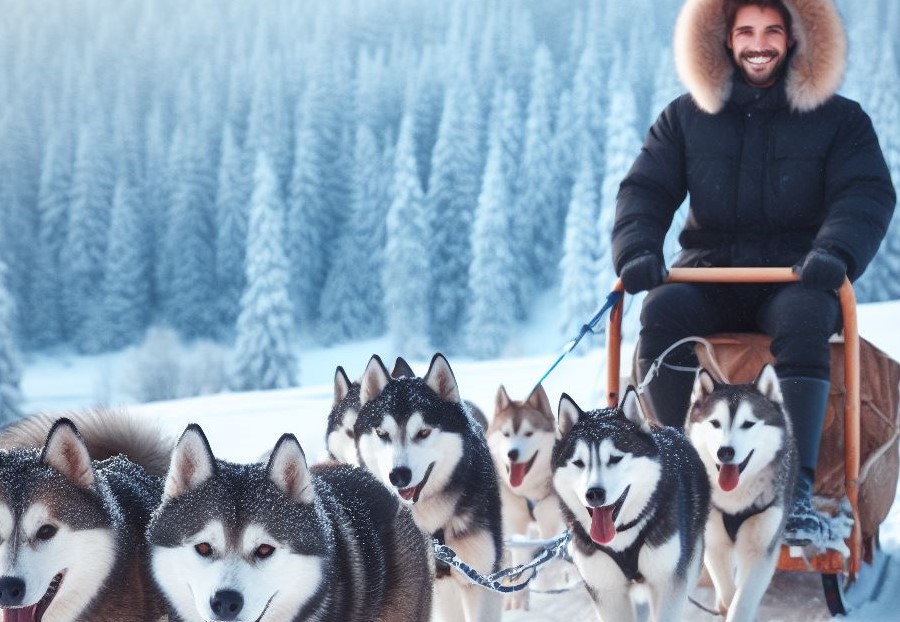
Dog sledding, an exhilarating winter outdoor adventure, brings together a rich history and the thrill of navigating the snowy wilderness. Discover the captivating tradition of dog sledding and the fascinating preparations required for this adrenaline-fueled experience.
Embark on a journey through time and feel the rush of excitement as you learn about the roots of this age-old practice. Get ready to embrace the thrill and prepare yourself for an unforgettable dog sledding adventure.
History and Tradition of Dog Sledding
The history and tradition of dog sledding can be traced back thousands of years, with roots in indigenous cultures and exploration expeditions. These ancient practices played a vital role in the history of regions like the Arctic, where dog sledding was essential for survival and communication. The early dog sleds were primarily used for transportation and hunting, enabling people to traverse snowy landscapes and transport supplies.
Over time, the tradition of dog sledding has evolved into a popular recreational activity and competitive sport. Nowadays, individuals have the opportunity to experience the thrill of gliding through snowy trails guided by a well-trained team of sled dogs.
Today, dog sledding not only allows people to enjoy the winter wilderness but also provides a means to celebrate and honor the cultural heritage of indigenous communities. Many locations offer dog sledding experiences that not only allow participants to immerse themselves in the history and traditions associated with this ancient practice but also foster a deep connection with nature.
Embarking on a dog sledding adventure offers a unique chance to embrace the winter season, while also experiencing the extraordinary bond between humans and animals. It is an opportunity to be part of a tradition that has withstood the test of time and to appreciate the remarkable skills and dedication of sled dogs and their mushers.
Preparing for a Dog Sledding Adventure
Preparing for a dog sledding adventure involves several important steps to ensure a safe and enjoyable experience. Here is a list of steps to follow:
- Research and choose a reputable dog sledding tour company.
- Check the weather conditions and dress appropriately for cold temperatures.
- Wear layers of clothing to regulate body temperature and protect against frostbite.
- Wear insulated and waterproof boots to keep feet warm and dry.
- Bring goggles or sunglasses to protect your eyes from wind and glare.
- Apply sunscreen to exposed skin to prevent sunburn, even in winter.
- Learn the basic commands for directing the sled and working with the dogs.
- Listen carefully to the instructions provided by the guide or musher.
- Practice getting on and off the sled safely before starting the adventure.
- Ensure your physical fitness level is appropriate for the activity and consult a doctor if necessary.
- Follow all safety guidelines provided by the tour company and the guide.
- Respect the dogs and treat them with kindness and care.
- Have a sense of adventure and enjoy the unique experience of dog sledding.
Winter Wildlife Viewing
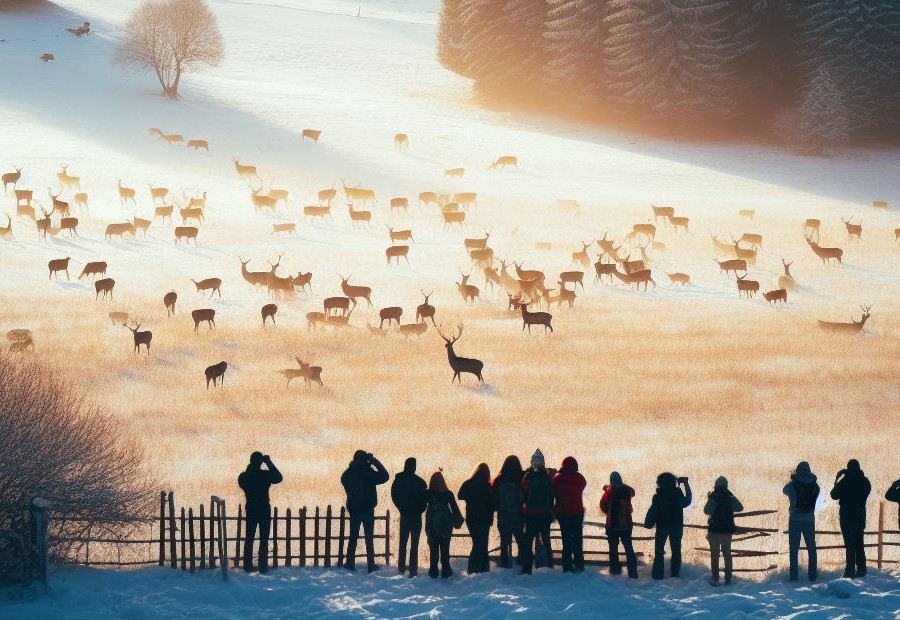
Winter wildlife viewing offers a thrilling opportunity to immerse yourself in the natural wonders of the season. Discover the best places to witness majestic creatures in their winter habitats and gain insights on observing wildlife in this magical time of year.
Prepare to be enchanted as you embark on an adventure where snowy landscapes and charismatic animals come together, creating unforgettable experiences in the great outdoors. So, bundle up and get ready to witness nature’s spectacle in the wintery wild!
Best Places for Winter Wildlife Viewing
- Yellowstone National Park: Known for its diverse wildlife, Yellowstone offers opportunities to spot animals such as wolves, bison, elk, and eagles.
- Denali National Park: Home to a variety of wildlife, Denali is a great place to observe moose, caribou, Dall sheep, and wolves.
- Grand Teton National Park: Located in Wyoming, this park is famous for its stunning landscapes and abundant wildlife, including elk, bison, bears, and bald eagles.
- Algonquin Provincial Park: Located in Ontario, Canada, Algonquin is known for its population of wolves, along with moose, deer, and foxes.
- Chincoteague National Wildlife Refuge: Located in Virginia, this refuge is home to a large number of migratory birds, including snow geese and tundra swans.
Tips for Observing Wildlife in Winter
- Be patient and quiet: Wildlife in winter tends to be more cautious and easily scared. Avoid loud noises and sudden movements to increase your chances of spotting animals.
- Dress appropriately: Bundle up in warm layers and wear camouflage or muted colors to blend into the winter landscape. This will help you stay comfortable and avoid scaring away wildlife.
- Find animal tracks: Look for fresh tracks in the snow to determine the presence of wildlife. Learn to identify different track patterns to determine which animals have passed by.
- Use binoculars or a telephoto lens: Since wildlife may be more elusive during winter, using binoculars or a telephoto lens will allow you to observe animals from a safe distance without disturbing them.
- Research animal behavior: Learn about the habits and behavior of the animals you wish to observe in winter. This knowledge will help you anticipate their movements and increase your chances of spotting them.
- Choose the right time of day: Many animals are most active during dawn and dusk, known as the golden hours. Plan your wildlife observations during these times for the best chances of seeing animals in action.
- Bring snacks and water: Winter wildlife observation can be a waiting game, so it’s essential to come prepared with snacks and water to keep yourself nourished and hydrated.
- Respect wildlife and their habitats: While observing wildlife, maintain a safe distance and avoid approaching or feeding them. Respect their natural behavior and habitats, and leave no trace of your visit.
- Join guided tours or hire a wildlife photography guide: If you want a more immersive and educational experience, consider joining guided tours or hiring a wildlife photography guide who can provide expertise and take you to the best wildlife viewing spots.
Ice Fishing
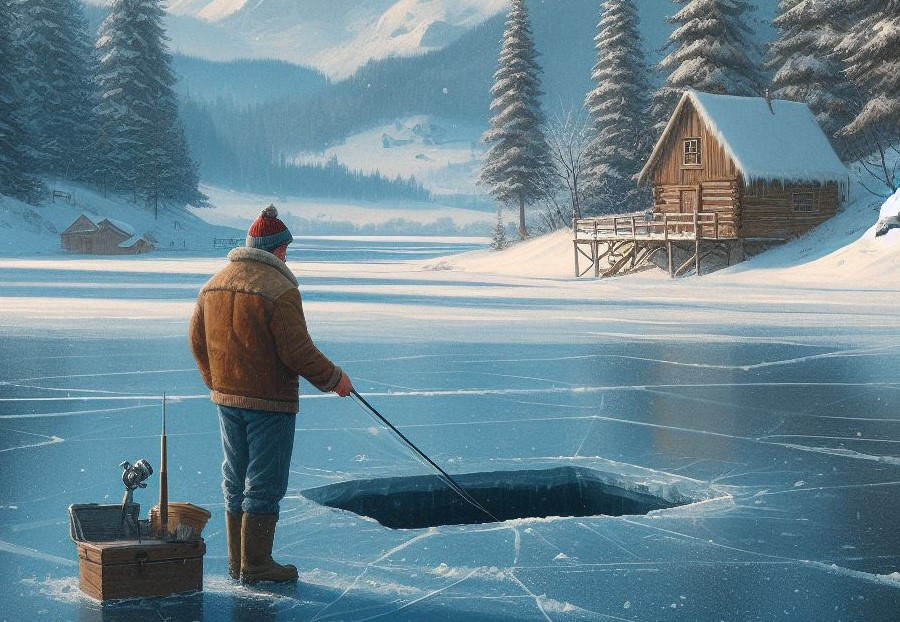
Ice fishing, a thrilling winter outdoor adventure, offers a chance to enjoy the frozen splendor of nature while trying to reel in some trophy-worthy fish.
In this section, we’ll dive into the excitement of setting up for ice fishing and discovering the popular fish species that eagerly await beneath the icy surface.
Get ready to absorb the tips, tricks, and insider knowledge to make your ice fishing experience one for the books. Let’s embrace the chill and embark on this frosty fishing escapade!
Setting Up for Ice Fishing
Setting up for ice fishing involves several important steps to ensure a successful and enjoyable experience:
- Choose a suitable location on a frozen body of water, ensuring that the ice is thick and strong enough to support your weight.
- Gather the necessary equipment, including an ice auger to drill holes in the ice, an ice fishing rod and reel, fishing line, hooks, and bait.
- Dress appropriately for the cold weather, wearing layers of warm clothing, insulated boots, gloves, and a hat.
- Secure any required permits or licenses before heading out to fish.
- Drill holes in the ice, spacing them out at a suitable distance depending on local regulations and fishing conditions.
- Set up your ice fishing rod and reel, attaching the fishing line and baiting the hook.
- Lower the line into the hole and adjust the depth according to the type of fish you are targeting.
- Be patient and watch for any signs of fish activity, such as movement or nibbles on the line.
- Once you catch a fish, carefully reel it in and remove it from the hook, following local fishing regulations and catch-and-release practices if necessary.
- Remember to clean up after yourself, packing out any trash or debris and leaving the fishing area as you found it.
By following these steps, you can properly set up for ice fishing and increase your chances of a successful and enjoyable fishing trip.
Popular Fish Species for Ice Fishing
When it comes to ice fishing, there are several popular fish species for ice fishing that you can catch:
- Yellow Perch: A common and popular fish species for ice fishing, known for its delicious taste. It can be found in many lakes and reservoirs.
- Walleye: Another highly sought-after fish species, prized for its flaky white meat. Walleye are known to be active during the winter months and can often be found near underwater structures.
- Northern Pike: Known for their aggressive nature, northern pike are a thrilling catch for ice anglers. They are large, predatory fish that are abundant in many icy waters.
- Bluegill: A small but tasty fish, bluegills are perfect for beginners and families. They can often be found in shallower water, making them easier to target.
- Crappie: Crappie are a popular choice for ice anglers due to their large population and the challenge they offer. They are known to gather in schools, making it easier to catch multiple fish.
Did you know that ice fishing is not only popular for catching fish, but it also creates opportunities for community and social engagement during the winter months?
Frequently Asked Questions
What are some exciting winter outdoor adventures that can be enjoyed by children and families?
There are numerous exciting winter outdoor adventures that children and families can enjoy. Some options include snowball fights, horseback riding, building snow forts, exploring snowy fields, and going on themed obstacle courses. Other adventures include ice skating, skiing, snowboarding, snowshoeing, glacial trekking, sleigh rides, and dog sledding.
How can I stay active during the winter without access to traditional outdoor sports facilities?
Even without access to traditional outdoor sports facilities, there are several ways to stay active during the winter. You can try activities like cross-country skiing, snowshoeing, stand up paddle boarding, jump rope, or outdoor pull-ups using an outdoor pull-up bar. These activities provide great exercise and help to improve both your physical and mental well-being.
How can spending time outdoors during winter benefit children’s health and well-being?
Spending time outdoors during winter has numerous benefits for children’s health and well-being. It helps boost their immune system, improve blood flow, and provides essential nutrients. Additionally, being outdoors in winter helps prevent Seasonal Affective Disorder, enhances creativity and focus, and promotes mental health. The absorption of Vitamin D from the sun is also a significant health benefit during winter.
Are there any safety precautions to consider when participating in winter outdoor activities?
Yes, it is important to take safety precautions when participating in winter outdoor activities. Dressing in layers, wearing appropriate gear, and staying aware of the weather forecast are essential.
Also, ensuring children stay hydrated by bringing plenty of water is important, as well as being mindful of temperature dropping and the potential for winter storms. It’s always a good idea to check specific guidelines and recommendations for each activity and location.

